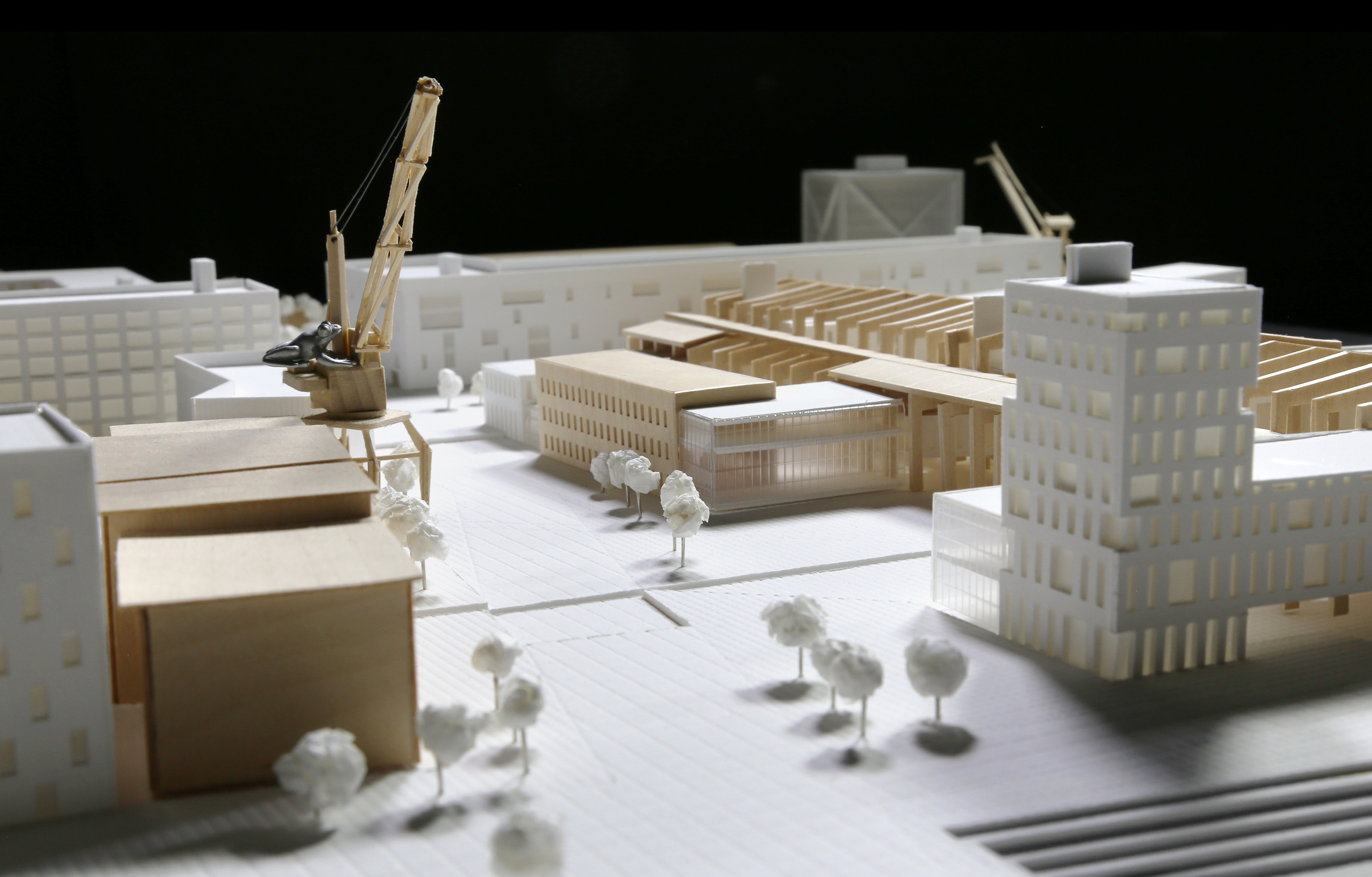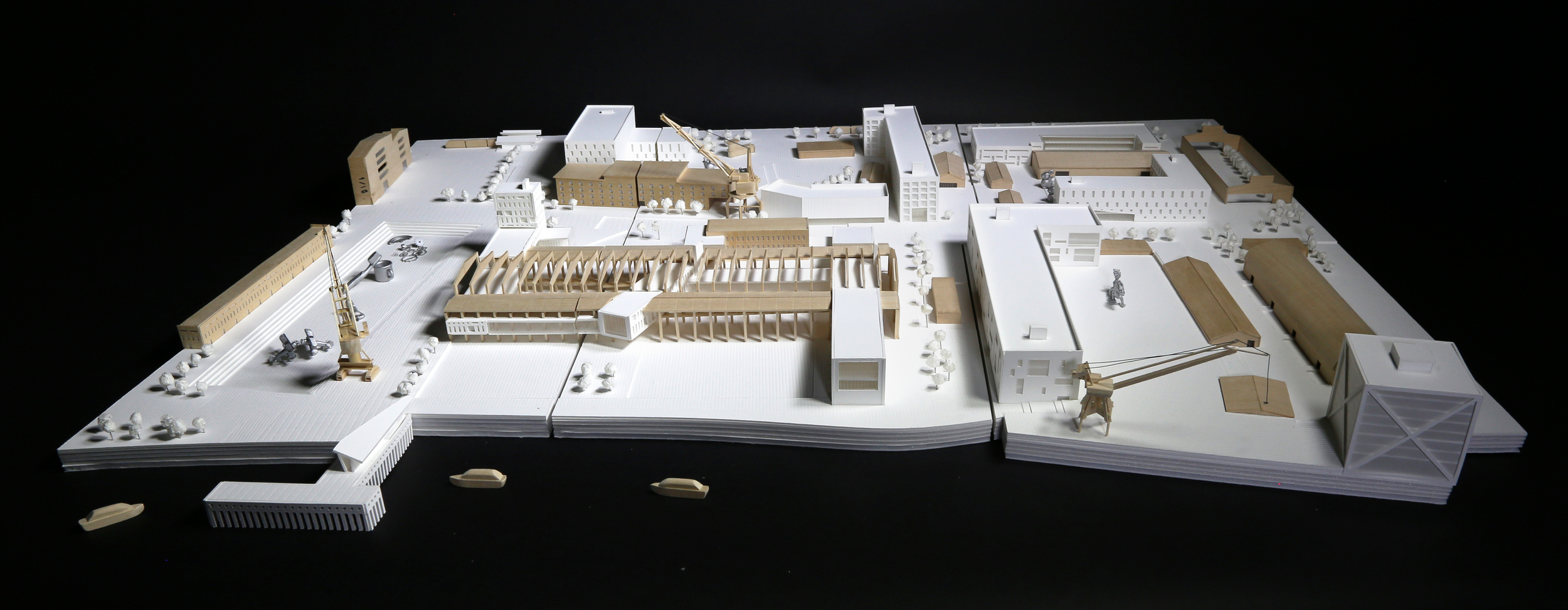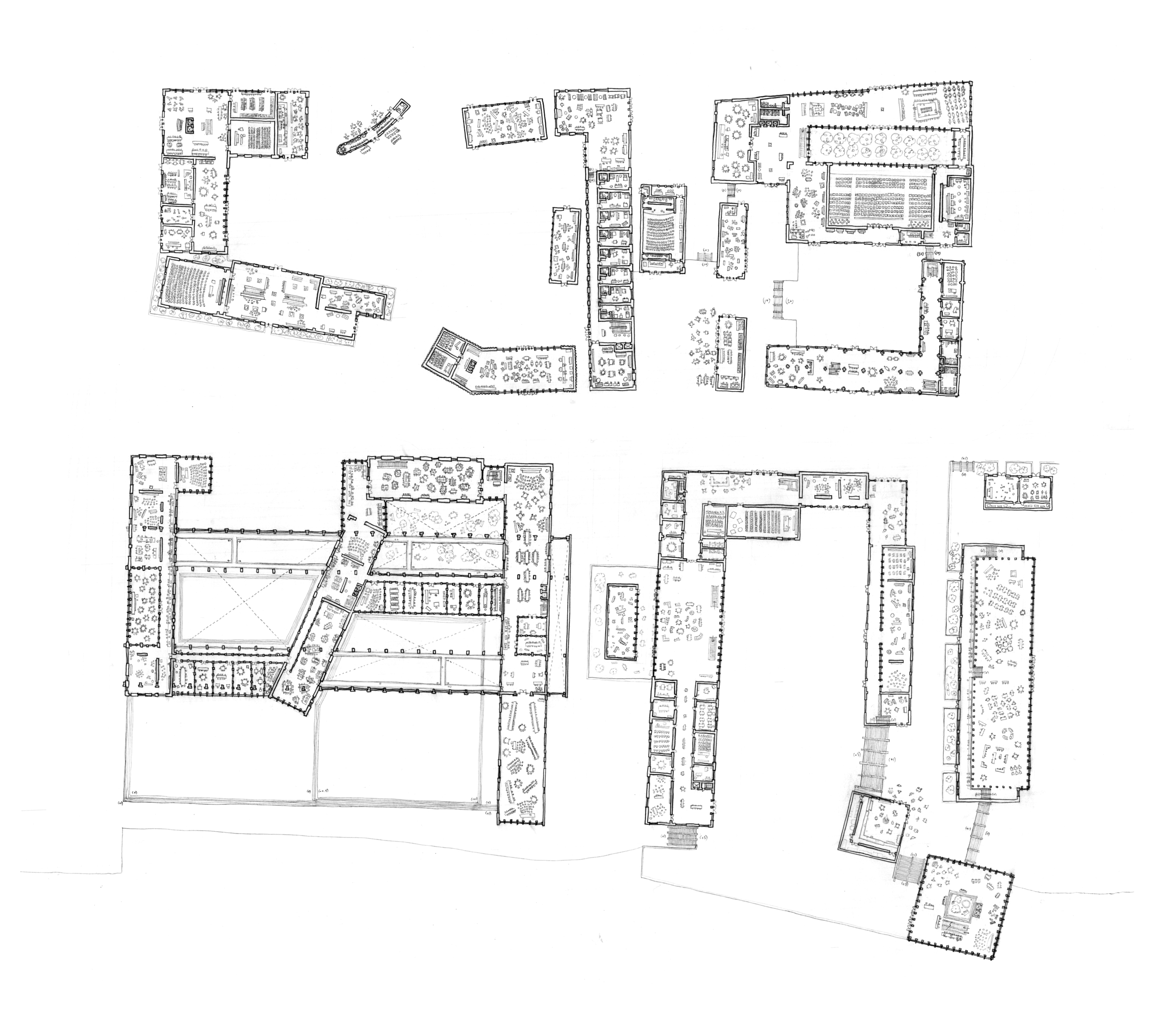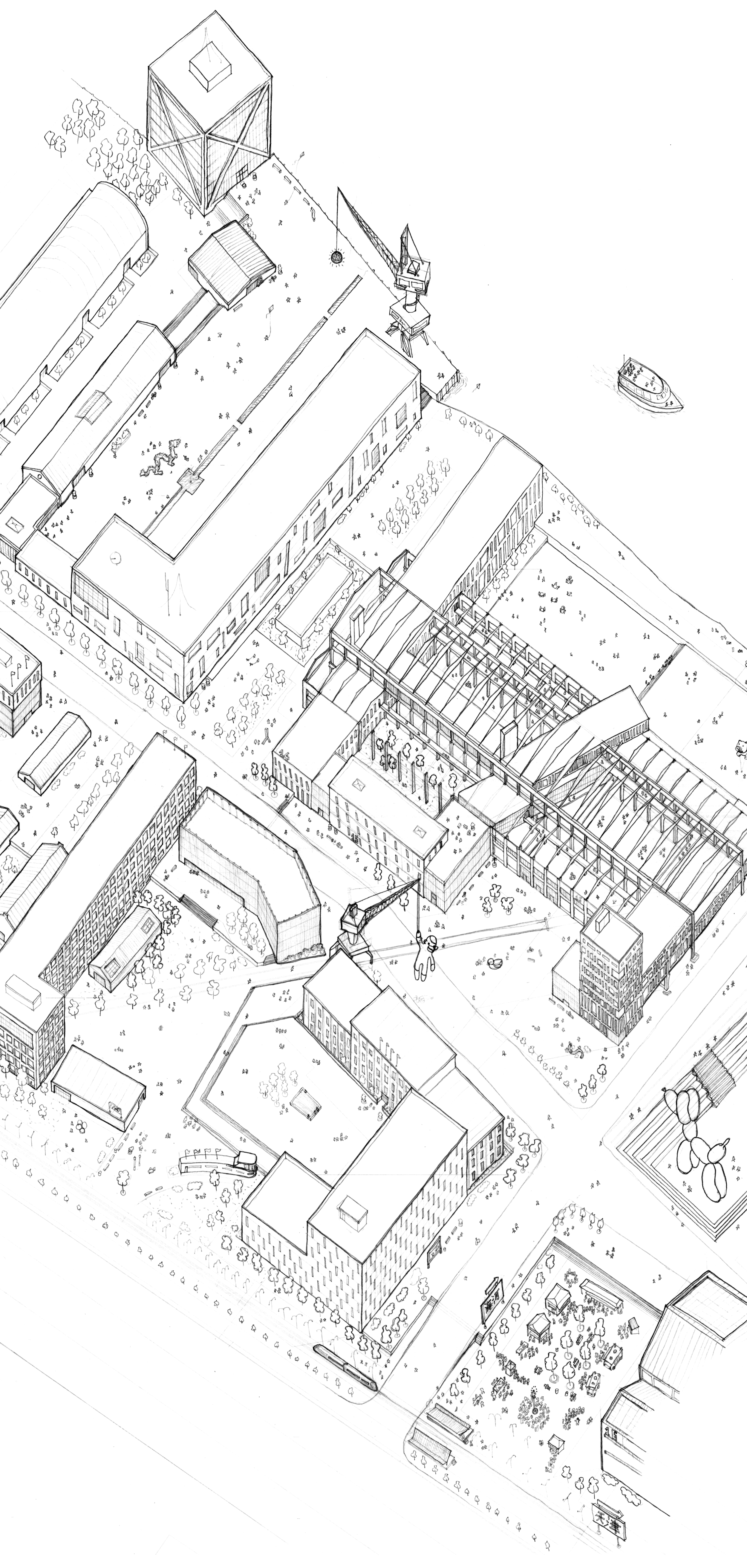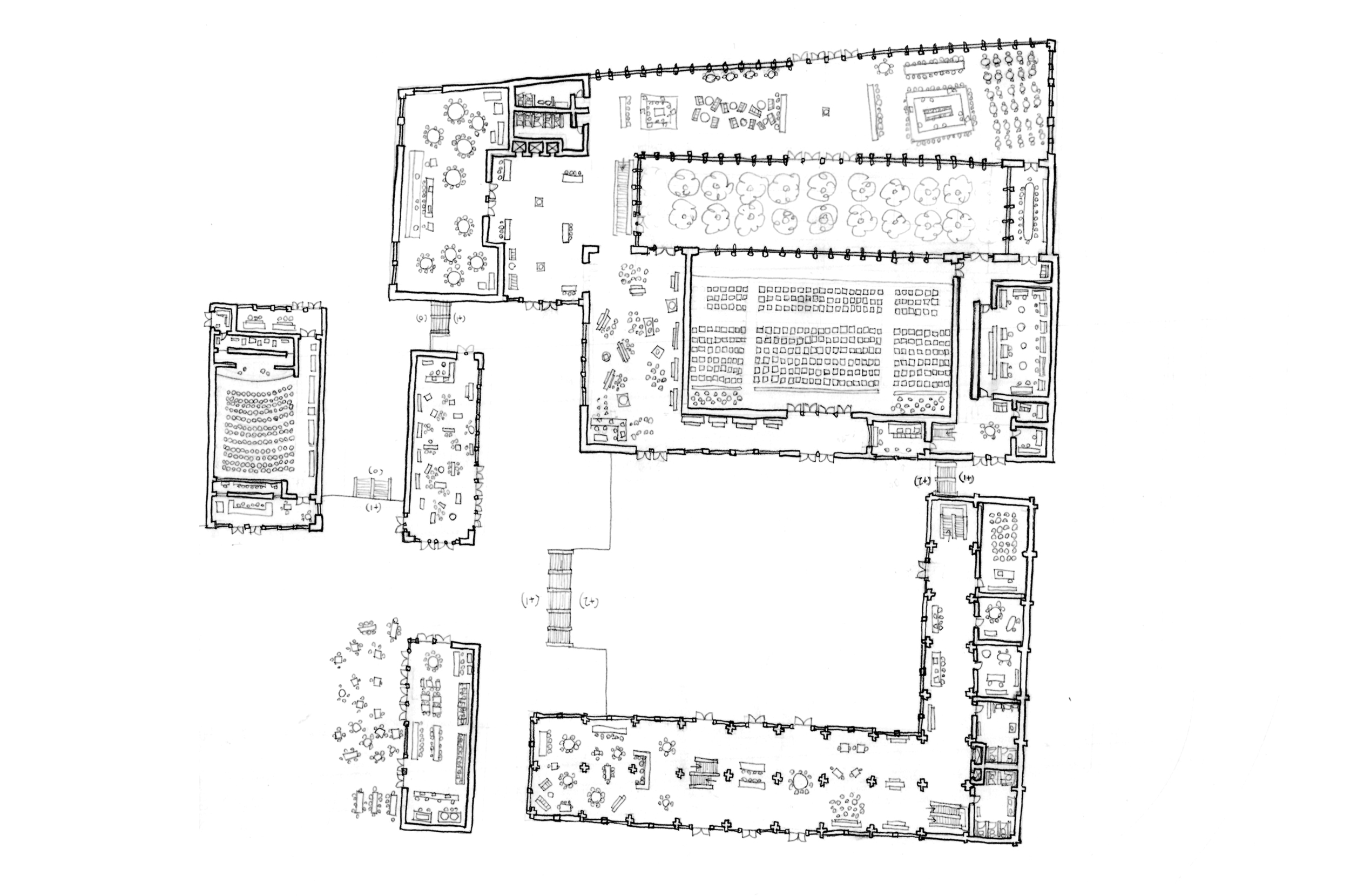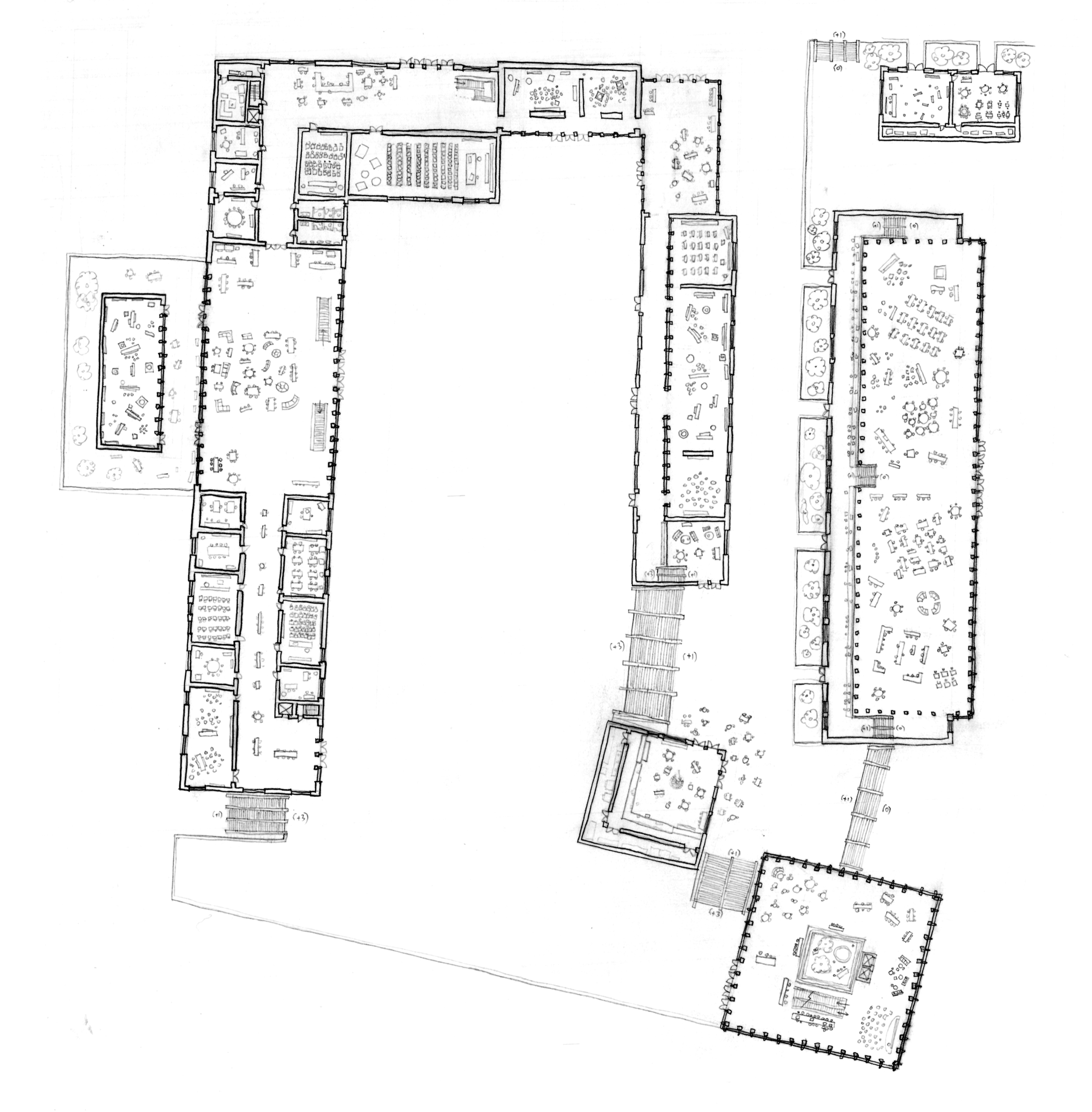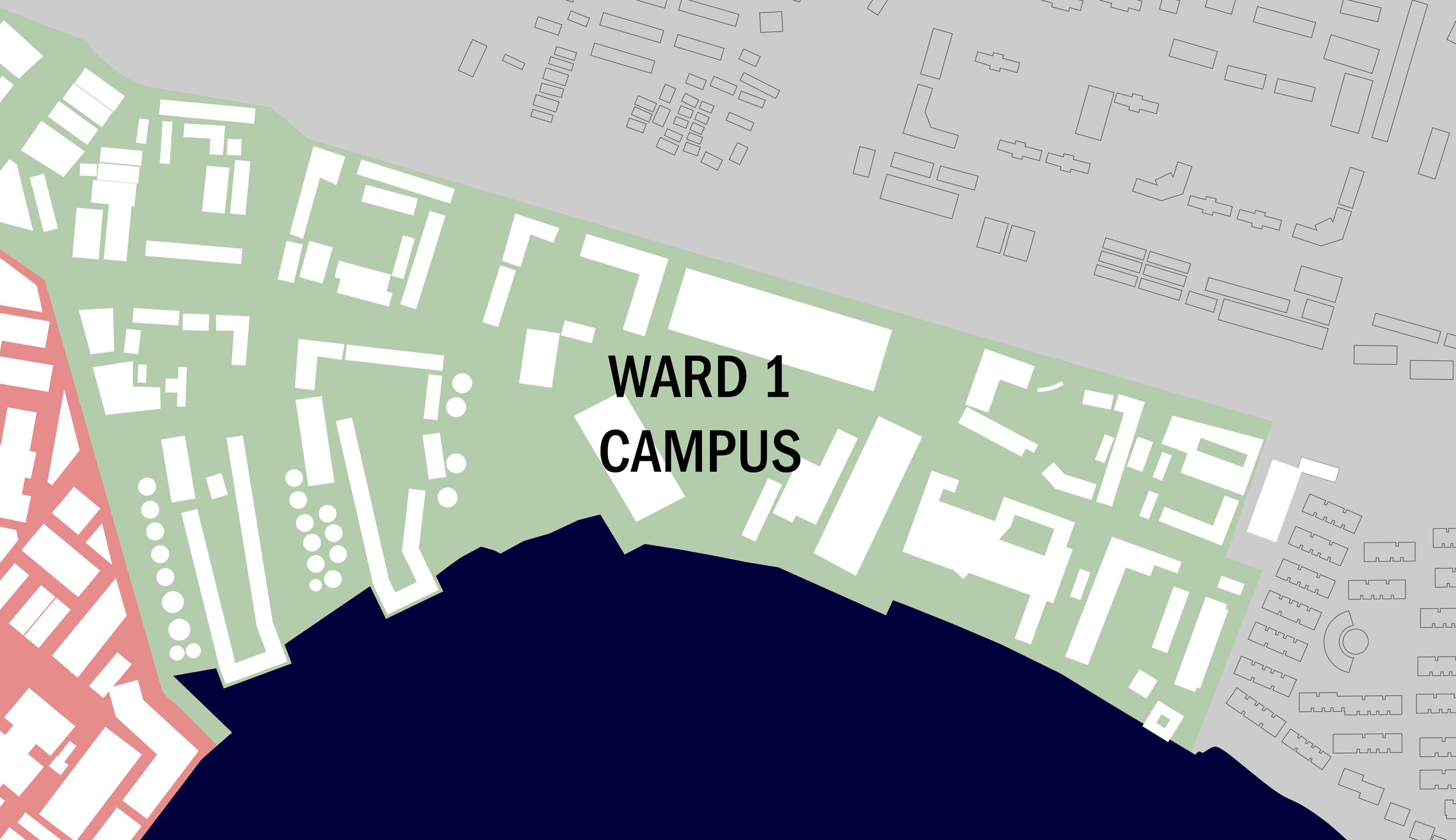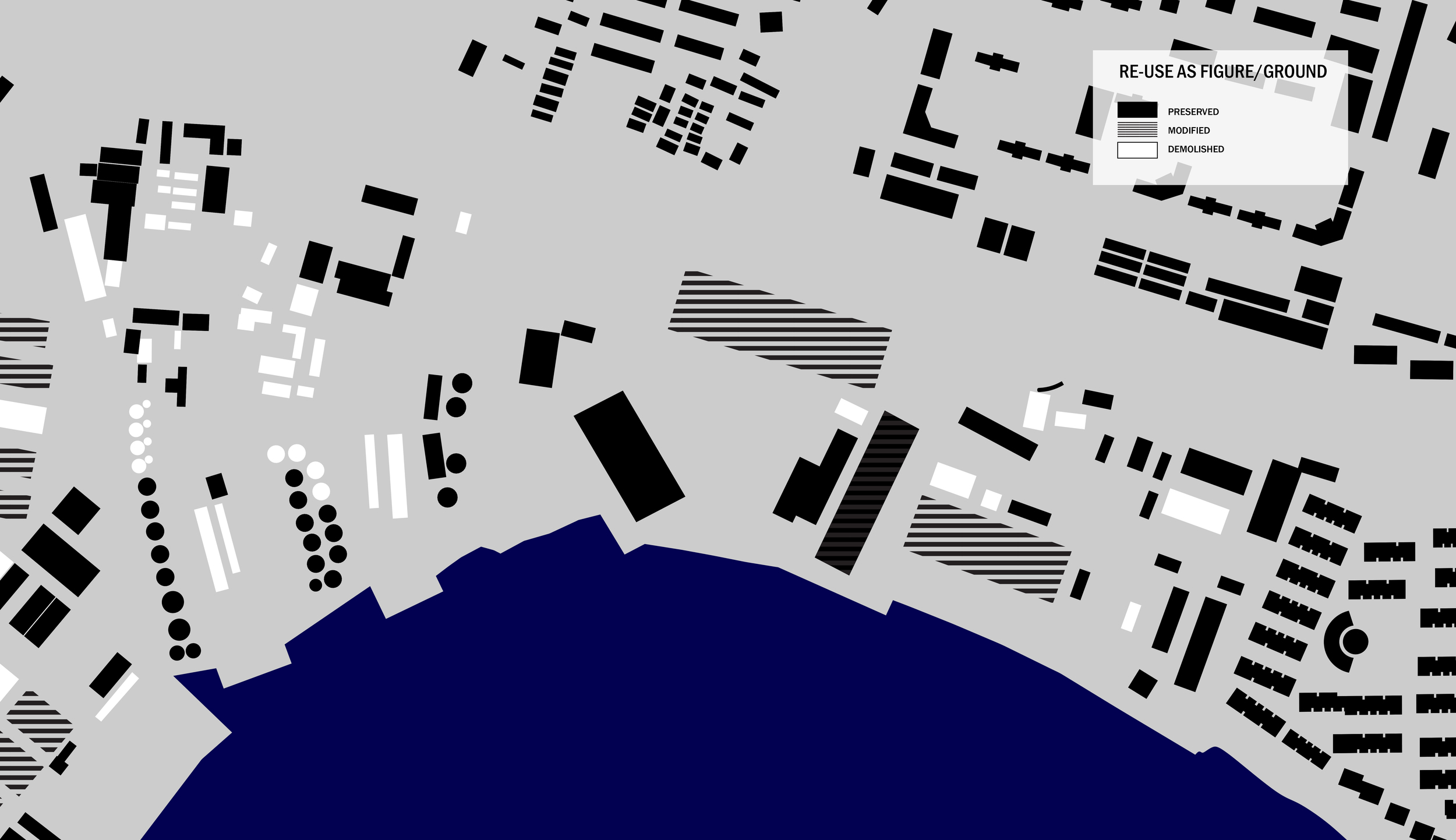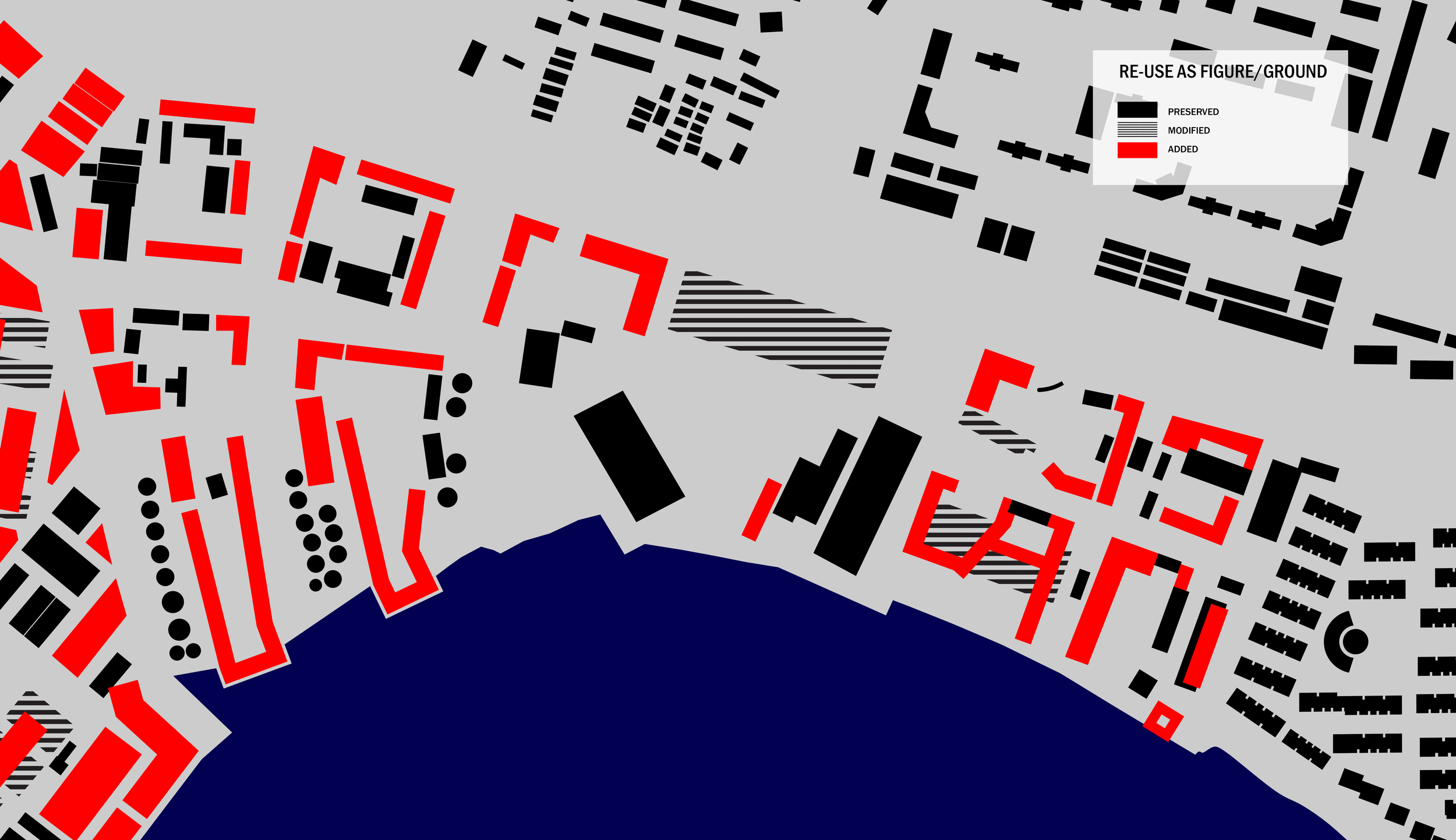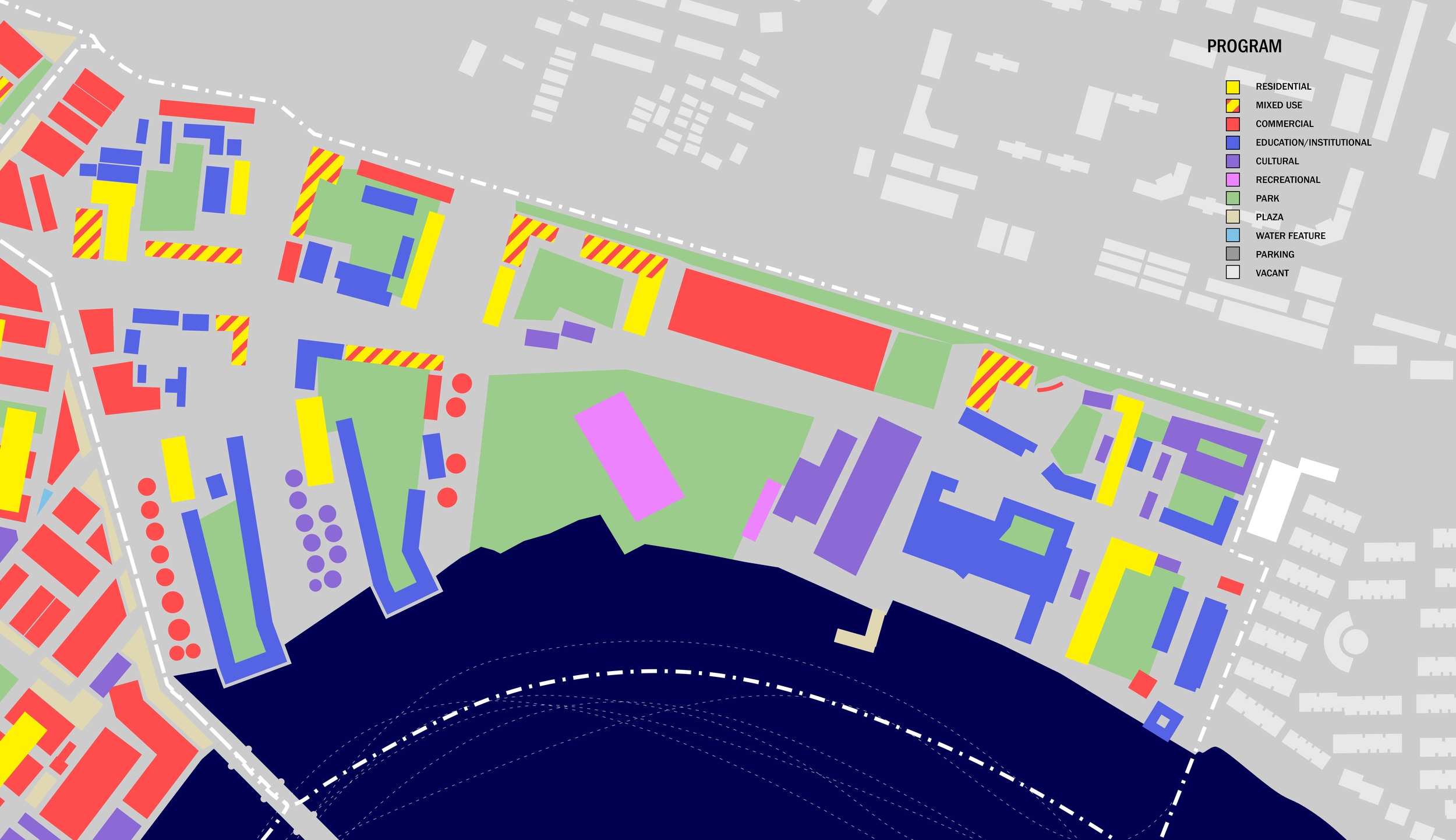
A campus of courtyards sensitive to memory, Tianjin, China
** Nominated for the H.I. Feldman Prize for 2015 (Yale School of Architecture)
** Published in Retrospecta 38 (Yale School of Architecture, 2015)
** Published in Constructs (Yale School of Architecture, 2015)
** Exhibited in Tomorrow, the year-end exhibition of student work (Yale Architecture Gallery, 2015)
Part 2
The Campus Ward of the Hai River Master Plan takes the existing industrial fabric of the site and reconfigures it in a series of individual courtyards. Each of these courtyards is composed of a different combination of building types and programs. The courtyards are formed by architecturally combining existing and proposed buildings in unique and site specific ways. The courtyard model allows us to combine a typological study with preservation constraints. We propose that each of these courtyards is to be rented and occupied by a different entity suited to each courtyard. As such, the ward becomes a site for a number of collaborative satellite campuses for education, research, and technology development.
The ward is centered on the existing shipyard area which is turned into a shared common zone for all of the campuses, comprised of a commercial building, an art zone and sculpture park, and a recreational facility. Additionally, the south-east courtyard adjacent to the central area becomes a shared, common facility which serves as a combined workshop and convention center, taking advantage of the existing warehouse’s scale.
The four east campuses of the ward are defined programmatically as: educational, performance, research, and the aforementioned shared workshop and convention center.
Part 1: Master plan for a ward-based linear city, Tianjin
(In partnership with Mahdi Sabbagh.)
(Yale School of Architecture, M.Arch. Fall advanced studio 2014. Critic: Alan Plattus, with Andrei Harwell.)


